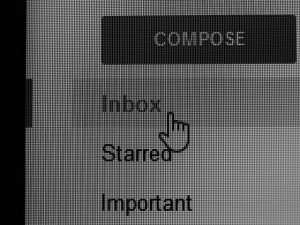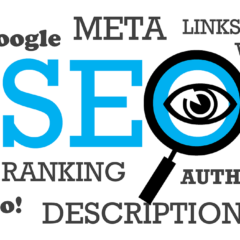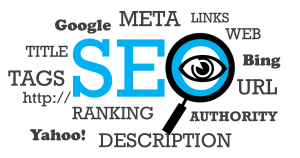youtube
2 Actions That Will Protect Your Dental Website from Being Left-Out-in-the-Rain
 My first thought was, “On a holiday at 6:30 p.m.?” But when I saw him standing there, in the rain, at the edge of my front porch, another thought occurred to me.
My first thought was, “On a holiday at 6:30 p.m.?” But when I saw him standing there, in the rain, at the edge of my front porch, another thought occurred to me.
His chosen approach has much to do with how you reach your audience via your dental website.
My soggy, evening visitor was going door to door selling the opportunity to “…have a few minutes of my time…” He wanted to talk about my home security system.
A number of thoughts raced through my mind in the brief moments I felt sorry for him standing there, on my doorstep, rain-soaked from walking door to door in my suburban neighborhood.
One thought dominated them all.
“There has to be a better way…!”
I’ve always admired door to door sales dedication. Seriously, it takes a level of perseverance (or desperation) to do it (I can relate having done my fair share of it a few years ago for a variety of reasons).
I peddled everything from products to ideas. And I gained much from the experience that serves me to this day.
That said, technology has vastly improved the “sales” relationship. Say what you will about the grass-roots, guerrilla marketing, bootstrapping diligence of the committed few who knock it out door to door.
There IS a better way. And how you’re attempting to reach your audience via your website could be the door-to-door equivalent of my soggy, holiday, dinner hour salesman.
“You had ONE job…”
Your dental website has one fundamental purpose. And depending on your specific niche it could be patient related or product/service related.
That ONE job? Compel action from your reader.
Let’s define action. And let’s bottom-line it, shall we?
For the dental practice, most often your website’s sole purpose is compelling a new patient, current patient, or referral patient to schedule an appointment. I’m not going to argue the sub-categories of appropriate purposes. Let’s keep it simple.
For the dental industry service or product business, the common driving purpose is compelling a new client, current client, or referral client to order products and services from you. Again, corollary purposes aside, let’s stick with the basics.
What gets the job done?
My soggy door to door sales-guy gets points for effort. But more important, and he knows this, it’s a numbers game.
Every “No” gets him closer to a “Yes.” It’s common sales motivation.
Is this true when it comes to your website? Does every visitor who searches for dental services, arrives on your site, and leaves with a “No” get you closer to a “Yes?”
And if that’s true do you have the time to measure it? (Understanding, of course, that you can deep dive into your site analytics and get a boat-load of relevant answers to that question.)
I choose to deal in the realm of what increases the likelihood that they’ll not only STAY but RETURN again and again.
In this instance, it’s about relevant, useful information.
And speaking of a deeper dive, allow me to clarify what “information” I’m NOT talking about.
There’s more to useful, dental website information than standard, overly technical explanations of crowns, fillings, dental hygiene, implants, etc. And there’s way more than talking about your latest, state-of-the-art, high-tech equipment. You know, the equipment you’ve just completed hours of training or CE credit for the qualification to use it on patients who you assume are laying awake at night longing for the opportunity to sit in your op-room chair to experience it.
I overstate my case. But that’s the door-to-door equivalent on many dental websites when delivering information.
“Hand that dude a towel…” (so he can dry off and throw it in).
It’s time to renew your website, the kind of information you share, and how you share it.
As I earlier observed following my dinner time sales intrusion – “There has to be a better way…”
Do this…
1-Build your authority by being a reservoir of useful information.
These days information translates into trusted expertise. Notice I added the word “trusted.”
I don’t have to tell you that a search for “dentist” in your city/region will return pages of apparent expertise. Most are trustworthy and treat their scheduled patients appropriately – you included.
How and where you rank in that search determines whether they’ll give you the opportunity to show your trustworthy treatment approach. You can pay for that ranking via Google Ads, etc. hoping they’ll discover you to be everything they’re searching for in a dental provider…and then some.
Or…
You can show up consistently as result of useful information about the treatment, service, or procedure that they’re interested in.
- Blog content, podcasts, video, and social media content relevant to your reader’s questions, problems, and concerns spotlight your authority in today’s digital media world.
- Build a list of topics from the questions your patients and people you consult with are asking.
- Create useful, easy-to-access content.
- Make the content available on your website’s blog/article page, via a podcast button (linking to a downloadable audio file or an iTunes channel), or a link to your dental practice’s YouTube channel.
2-Be consistently available with answers to the questions patients/clients are asking.
There’s more to answering questions than filtering a select few through your website’s FAQ page.
- Make your web page’s sidebar a billboard for where site visitors can get answers to their questions.
- Create compelling content titles that capture their attention (make them scream, “Read me!”) in the “Recent Posts/Articles” section.
- Show your interest in patients by making your content about them and their questions…not you and your latest technological advance, credentials, etc.
Trust translates via being attentive. Your attentiveness shows up in being useful via quality content.
Don’t get left-out-in-the-rain on your dental website. Persevere, sure.
But be certain that your diligence is, above all, useful to those you’re seeking to compel.
3 Dental Email Marketing Strategies to End Inbox Overwhelm

Creative Commons
“Email is where keystrokes go to die.”
Wait! Don’t send email to the bottom of your dental marketing strategies.
But before you send another email it would help to understand the value of your efforts.
James Clear wrote about Microsoft employee and productivity expert, Scott Hanselman’s jolting perspective.
“Email is where keystrokes go to die. You have a finite number of keystrokes left in your hands before you die.”
It makes sense that you should value your energy. Yet what if you evaluated each word you type?
- Would it change what you wrote in your most recent email message to your list?
- Could you use those same keystrokes to create a message or blog post that will help your readers rather than potentially repel them with another in-office special?
A simple fly-over of your own email inbox will quickly remind you of how overwhelming content can become. It’s no surprise that you wonder –
“How do I get the most return from the emails I send to my practice, house, or business list?”
That’s a good question. And there’s a one word tweak I’d offer to shift your perspective slightly.
This slight shift in perspective could be the difference in the effectiveness of your email marketing strategies. It’s all about valuing your ability to influence people for the good you want to deliver.
After all, you’re a professional. Whether you provide dental services that transform someone’s health and appearance or you provide products and services that enable dental professionals to accomplish those goals – you have something to offer.
So…here’s the shift in focus I earlier mentioned…ready?
Every marketing strategy you use (email included)
is about the “give”rather than the “get.”
It’s a valid question to ask – “How do I get the most return…”
I’m in business just like you are. I have a finite amount of time (and keystrokes) to share my expertise with the world. So getting the job done is alright by me.
These days – and here’s the deal – it’s to your advantage to give something to get something. Patients, buyers, shoppers, clients (whoever we’re talking about) are over the whole in-your-face, hyped-up sales approaches.
Make Your Keystrokes Matter by Ending Email Marketing Overwhelm
1-Email is only as effective as your intention.
Amazing thing about your senses. Especially your sense of smell.
Isn’t it interesting how you can sniff someone’s intentions. This happens with marketing all the time.
A subject line can reveal a lot about the sender’s desired result. There’s been much debate about whether you should veil your intentions or cut to the chase.
The answer depends on your relationship with your recipient(s).
For example, if you’re accustomed to a bottom-line sales message, it won’t surprise you when a subject line introduces a can’t-miss offer. If you’ve purchased from them before and you’ve benefited from their product or service it’s no issue to you.
But if you’re not on that level yet…well…you feel the turn-off. Am I right?
Think about the email communications you’re sending.
Are they worded as if the reader is a satisfied user, patient, client, customer that you’ve established a trusted relationship with?
Or…
Are they filled with numbing, pitchy content that makes the reader feel like a list number minus any real connection with you?
Check your intentions at-the-cursor. Value the relationship you have with the reader first, and in many instances, long before you value their dollars.
2-Email is engaging when it connects emotionally first and economically last.
People put their money where their heart is. That’s not a trite take-off on a common idea.
This is one of the fundamental rules of selling –
“People buy things for emotional not rational reasons.”
These days it’s more about engaging than selling. I know…I know you’re tired of hearing about engagement.
Engagement this. Engagement that. I get it.
But don’t dismiss this trendy word before you realize its intrinsic worth to your email marketing.
If you want to connect with people, get their attention. And once you have it, respect it.
Don’t dumb-down or numb-down your connection with overkill on promotional hype.
Give your readers something that sticks with them from the first keystrokes you make.
- Tell a story in the first paragraph (the lead).
- Connect the story to their problem (the body copy).
- Reveal the solution via your service/product story to their problem (the close).
And don’t forget the all-important element…
- Compel them to open and read (engage with) your email content by crafting a short, catchy (not too cute or hypey), benefit-focused subject line.
3-Email energizes your reader when it does two things:
When it’s useful – avoid short-changing or duping your reader list. Give them something they can use every time you email them.
If you’re promoting a service or product connect that to a problem they have. Make your service/product the useful benefit to solve a common problem even if they don’t schedule an appointment or purchase the product/service.
Share links to other relevant content via colleagues’ or industry leader’s blog, YouTube channel, Podcasts, etc.
Give bonus paybacks just for reading your email – add them to an exclusive group for your next promotion (before the general public), allow them priority access to a specific treatment, service, or product feature.
When it enhances communication – remember, connect before you ask for something.
Take time (via an email or two…or three) before you invite them to do something. This reveals that you value them more than what they do for you.
Ask relevant questions to understand how you can help them via your services, products, etc.
Create new email content around answers to those questions (talk about maximizing the value of your “keystrokes”).
Ask before you tell or offer. Communication works better that way.
Make your words matter – every single keystroke.







